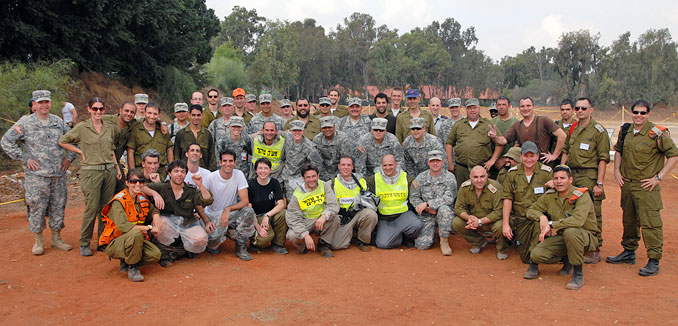Israel and the United States are joining forces this week for the five-day, ballistic-missile-defense exercise Juniper Cobra. The Juniper Cobra exercises have been held every two years since 2001, and this year it will be the seventh exercise. In 2009, the main scenario of the exercise was an Iranian missile attack against Israel.
In 2012, the Juniper Cobra was postponed, likely to reduce tensions with Iran. Toward the end of that year there was a similar Israeli-American exercise, called Austere Challenge, in which the Israel Defense Forces and the U.S. Army trained together in intercepting targets.
During this year’s exercise, American troops belonging to EUCOM (U.S. European Command) are being deployed in Israel to strengthen the Israeli anti-missile systems. More than 4,000 American and Israeli troops are involved in the exercise (including over 700 U.S. troops) in Israel.
It will provide training in a variety of areas, including ballistic missile defense, and other areas, along with two U.S. Aegis-class ships in the Mediterranean. The exercise will employ Israel’s entire rocket and ballistic missile architecture, including Iron Dome, Arrow, and David’s Sling: assets that the United States is proud to have helped Israel finance and develop.
The Israeli defense systems are partly financed and supported by the United States.
The Middle East is known to be home of huge quantities of projectiles and Israel is under the threat of thousands of rockets and missiles. One main concern is that many players in the region are arming themselves with precision-guided heavy rockets, and some are likely to acquire GPS-guided ballistic missiles. In the face of this threat Israel continues developing sophisticated systems jointly with the United States, such as the Arrow 3, perhaps the most advanced missile interceptor in the world according to Uzi Rubin, former director of Israel’s Missile Defense Organization.
Iran poses the greatest threat to Israel today with its long-range Shahab-3 missiles, which can be fired from deep inside Iran and fly some 1,200 miles. This is without mentioning Hezbollah’s and Hamas’s arsenals on Israel’s borders. The Tower has learned that Hezbollah has amassed some 60,000 rockets in southern Lebanon, posing a threat to its civilian populations.
As in prior years, this exercise is important for training and laying down the necessary infrastructure and interoperability between Israeli and American missile-defense systems for common U.S.-Israeli challenges and threats in the region.
Going back to 2009, U.S. Admiral John M. Richardson, then deputy commander of U.S. Sixth Fleet, stated that “Israel is a strong ally of the United States” and looked forward working with his Israeli friends.




